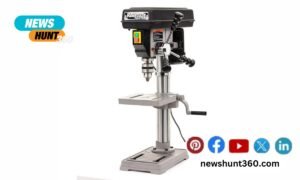Are you an amateur handyman or a great beginner and you do not know all the tools that occupy the shelves of DIY stores? Do not panic! We are here to guide you. Thanks to our simple articles and accessible to all, discover what are the functions, specificities, and uses of a drill, lag screw, saber saw, sander, high-pressure cleaner, a hammer, a screwdriver, or a dowel. Thanks to the explanations of our specialists, the tools will no longer hold any secrets for you! also check the basic DIY tools List before starting any DIY project.
In addition, discover our tips and advice to build the ideal toolbox and to always have the right tools at your fingertips.
Contents
Choosing the right tool and using it properly, that is the Question
There are so many sanders, screwdrivers, hammers, dowels, brushes, sandpaper, chainsaws, hinges, gaskets and even saws. Difficult to navigate, even for an experienced handyman! If you have a specific need or if you want to equip yourself with the most suitable tool for your possible future work, our experts will guide you in your purchase in order to find the model that meets your expectations.
Our specialists will describe the uses of each one, their characteristics, their possibilities, their advantages, and their disadvantages to find the right tool which will be able to accompany you in your small DIY tasks and/or in your large projects.
By type of tool or by material to be worked, discover our tool sheets, clear and practical, as well as our tips and advice from the pros for successful DIY jobs.
A wide variety of DIY jobs
When we talk about DIY here, it is above all a matter of small odds and ends, minor repairs, various maintenance actions such as cleaning the glass of an insert or renovating brass, etc. Among the daily DIY tasks, those of plumbing are sometimes necessary especially when the sink is clogged or the toilet is leaking: it is better to be able to intervene before calling on a plumber whose bill may seem substantial.
If you have children, you may also need to repair a puncture on a bicycle or change the brake pads, although this could also concern your own bicycle; without forgetting that fans of scooters will also have to do to maintain their machine.
In terms of DIY, you will inevitably have observed that over the years, your toolbox will have been enriched with various instruments, tools and hardware, allowing you, at a moment’s notice, to be able to put a shelf, hang a frame, fix a rod. curtain, etc. Being well equipped is the basis of DIY, avoiding being demotivated by laziness to go to the store to buy what you need.
Moreover, many do-it-yourselfers get caught up in the game and end up taking an interest in DIY when it comes to DIY: it is always a little proud to be able to say that you are the craftsman of this custom-made shelf or this frame. mirror made harmoniously to match the living room rug!
Which hand tools for DIY
To the question of what DIY hand tools are needed to staple posters and fabrics, the most obvious answer is the stapler. The choice, however, is quite difficult, since there are different models of the stapler. The choice basically depends on the use you plan to use.
Other points such as the loading capacity and the ergonomics of the stapler handle should also be taken into consideration. The larger the loading capacity of the stapler, the more jobs you can do before you have to load the machine again. Thanks to the ergonomic handle, you will tireless.
Tools to Perform Cutting Work
In DIY, we often need to do cutting work. The key to knowing which DIY hand tools to choose is the type of material you want to cut. Here are the main tools to use when performing cutting jobs.
The shears
The shears are a kind of “pair of scissors” which are used to cut thin sheets or pieces of plasterboard rails. There are different models of shears. Some allow for straight cuts, while others are designed for making curved cuts. When buying a shears, make sure the handles of the tool are ergonomic, and the blades are perfectly rigid.
The bolt cutter
This tool is suitable for cutting solid metal rods, cable, mesh, chain and even padlocks. A quality bolt cutter has a jaw that is strong enough not to buckle under pressure. It also has forged arms and ergonomic handles, guaranteeing you an optimal comfort of use.
The Tile cutter

The tile cutter, as its name suggests, is used to cut stoneware or earthenware tiles. There are several things to consider when choosing a tile cutter, but the most important is the length of the appliance. This in fact determines the cutting capacity of the tool. Whenever possible, also opt for a model equipped with two rails. This will give you a cleaner and more precise cut.
The hand saw

The hand saw can cut all types of materials. The choice depends on the nature of the material to be cut and the type of cut you want to make (angle, curve, straight, etc.). Also, note that the number of teeth of the hand saw blade is decisive in the choice of the hand saw. The fewer teeth in the blade, the cut will be faster, but it will also be coarse. As a guide, the metal saw is designed to cut metal, but also plastic and PVC.
Hand tools for Painting and Gardening
If you plan to do any painting work in your house, you need a brush and a roller, but that’s not all. You will also need
- sanding block,
- dusters,
- window scraper, etc.
To prepare the surface to be painted. If you like gardening, you will also need a shovel, a spade, or even a pickaxe. You will also need shears, secateurs, etc. to prune branches. The ax, it will be used to split wood in your garden.
Over time, the handles of some tools can become wider and become less stable. You can then buy handles suitable for hoes, scythes, rakes, forks, and your other gardening tools. The tool handles we sell are available in different sizes and diameters to allow you to better tailor it to your use. The handles can be wood, metal, or solid plastic, it’s up to you to choose which one suits you best.
Other essential tools for any handyman
There are still other tools you might need for your DIY jobs. Here they are :
Wrenches, sockets, screwdrivers, and ratchets
If you are wondering which DIY hand tools you should also have in your toolbox, we have the answer to you about socket wrenches and ratchets. Whether they are pipe, flat, eye, or combination or with knobs, wrenches are always essential. You can purchase sockets and wrenches as needed. However, to avoid running out of tools at the wrong time, we recommend that you directly purchase a box containing various wrenches, sockets, and ratchets. A good handyman also has screwdrivers and screwdriver bits in his toolbox.
Tools for woodworking
What DIY hand tools are better for woodworking than files and planes? Whether you are an avid handyman or an amateur carpenter, these tools will be essential for you to work on the different pieces of wood. The grater will be used to work with soft materials.
Hammers, mallets and clubs
These hand tools are also the best allies of DIY enthusiasts. There are different models. The choice of the hammer ideal essentially depends on the use you want to do.
Carpenter’s hammer
This is the most common model. It allows the nails to be driven. With its steelhead and rectangular table, it allows you to perform different cabinetmaking and carpentry jobs.
The hammer nail puller
It has a split-tip. With it, you can plant, remove, and replant the nails according to your needs.



